We switched things up for our Friday evening dinner. Instead of beer and pub fare, Tim and Amanda took us to one of their favorite restaurants, Sen. Sen translates to noodle, or thread, in Thai. The owners of Sen have translated their family’s favorite Thai street carts into an upscale restaurant in downtown Bend, Oregon.

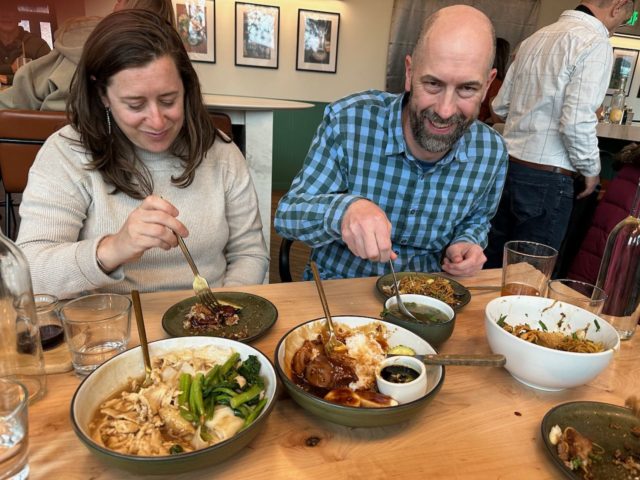


Saturday was our last day in Bend with Tim and Amanda. Changing things up again, we left the beautiful greenery of the Deschutes National Forest to visit Newberry National Volcanic Monument which is also in the Deschutes National Forest. It is said that no trip to Bend, Oregon is complete without exploring the Newberry Crater.
We began at Lava Lands Visitors Center to orient ourselves to the Newberry Crater through their educational displays and information. Created in 1990 the Newberry National Volcanic Monument covers 54,000+ acres of lakes, lava flows, and geologic features all in central Oregon.
Newberry Crater, a 1,200 square mile volcano (about the size of Rhode Island), is both seismically and geothermally active. This crater is actually a caldera, a large depression that is formed when the overlying rocks collapse as a magma chamber is emptied. The caldera stretches across 17 square miles in the heart of the volcano. Geologists believe the caldera sits over a shallow magma body only 2 to 5 kilometers deep. Newberry’s last eruption was very recent (in geologic time) at only 1,300 years ago. “It’s not so much a question of if it will erupt again but when.”

After spending some time in the Visitors Center, we headed out to hike up the path called “The Trail of the Molten Land”. The day was slightly overcast which added to the desolate feeling of the surroundings. Such a contrast to the past two days of massive pine forests and waterfalls.

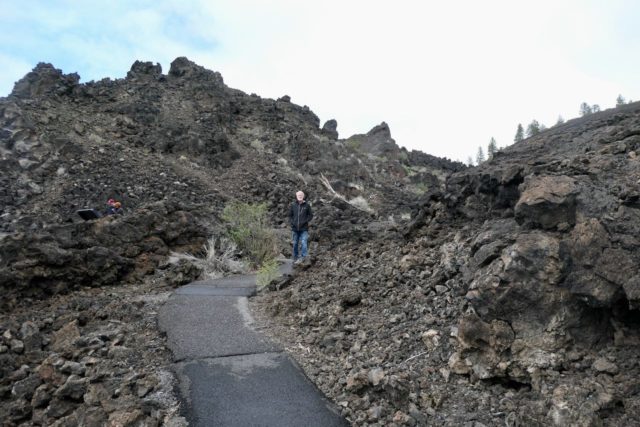
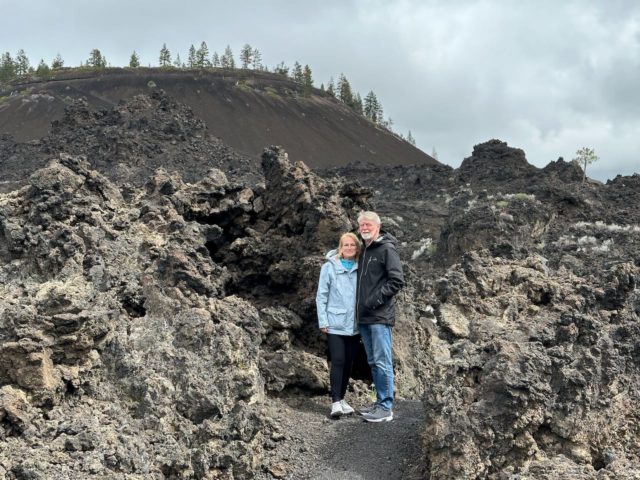
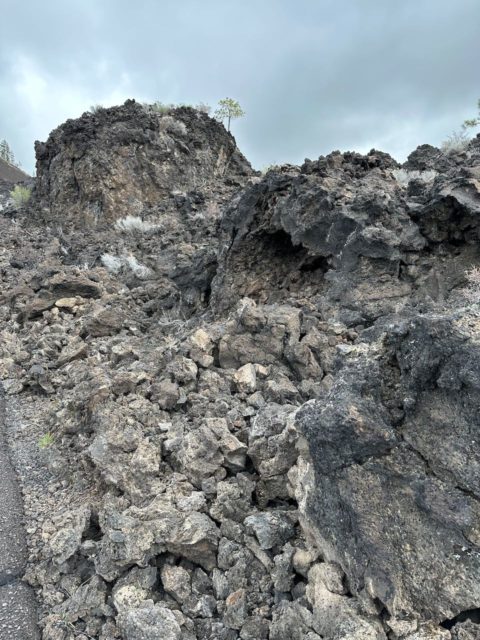


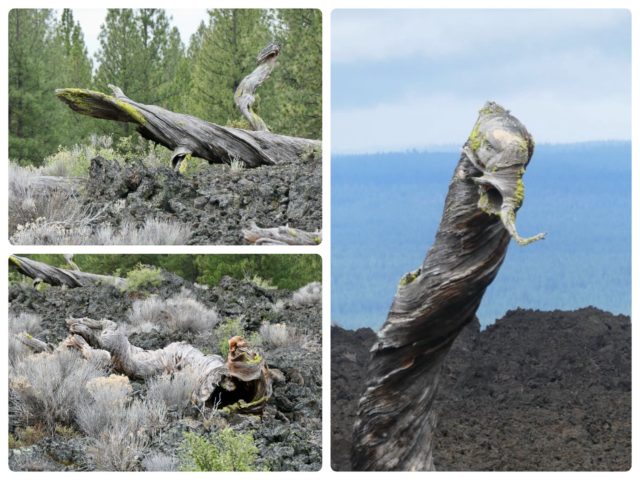
Next, we hiked up to Lava Butte, a part of the system of small cinder cones on the northwest flank of NewBerry Volcano that erupted around 7,000 years ago and now sits surrounded by a 9 square-mile lava flow.

The butte has been used as a fire lookout tower since 1913. This current station was built in 1998 and is one of the busiest in the northwest, averaging more than 125 first reports of fires.
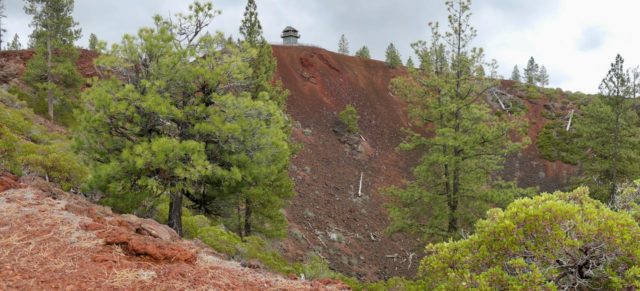
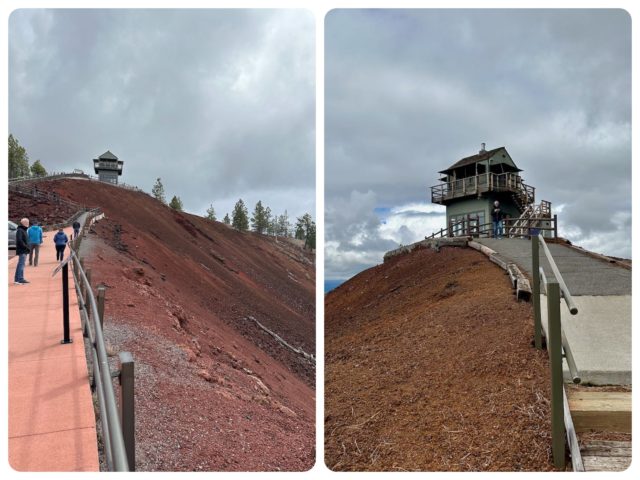
“Cinder cones build up when lava blasts high in the air and falls as cinders in a pile. As the eruption continued magma with much less gas forced its way out of the side of the cinder cone. The resulting lava flow traveled six miles downhill.”




We enjoyed our time with Tim and Amanda so much, not only the amazing places they showed us around Bend, but just spending time with them which is too rare. Tim works remotely as an IT guy for a company based in Portugal. We try to understand what it is he does, but frankly, we just can’t comprehend it. However, he has some very interesting hobbies.
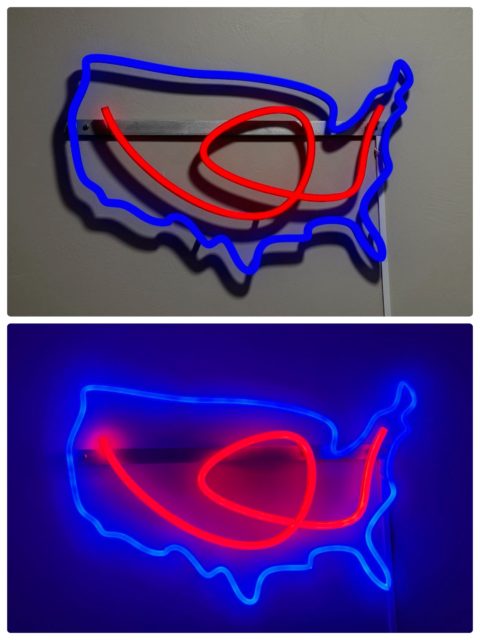

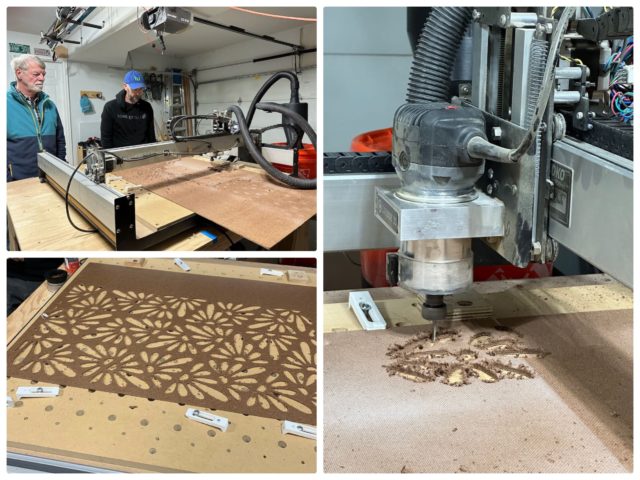

This terrific week came to an end, leaving us with incredible memories of our time here.
On to Alaska!
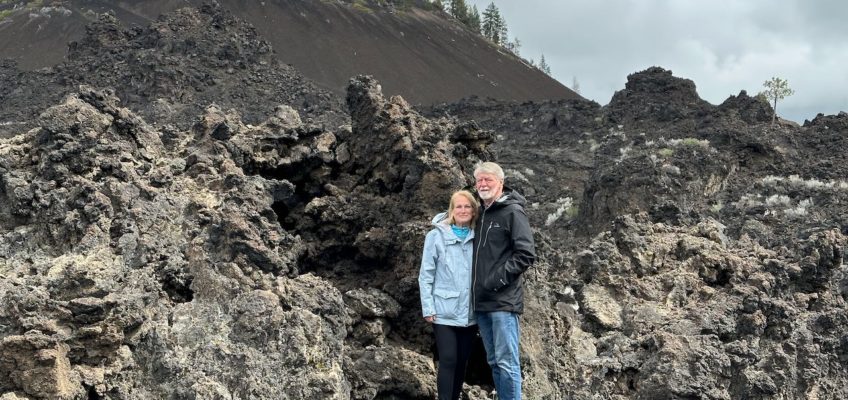
Mary-Jo Shultis
Wow, remarkable. Great post. incredible scenery. Makes me want to travel out there again.